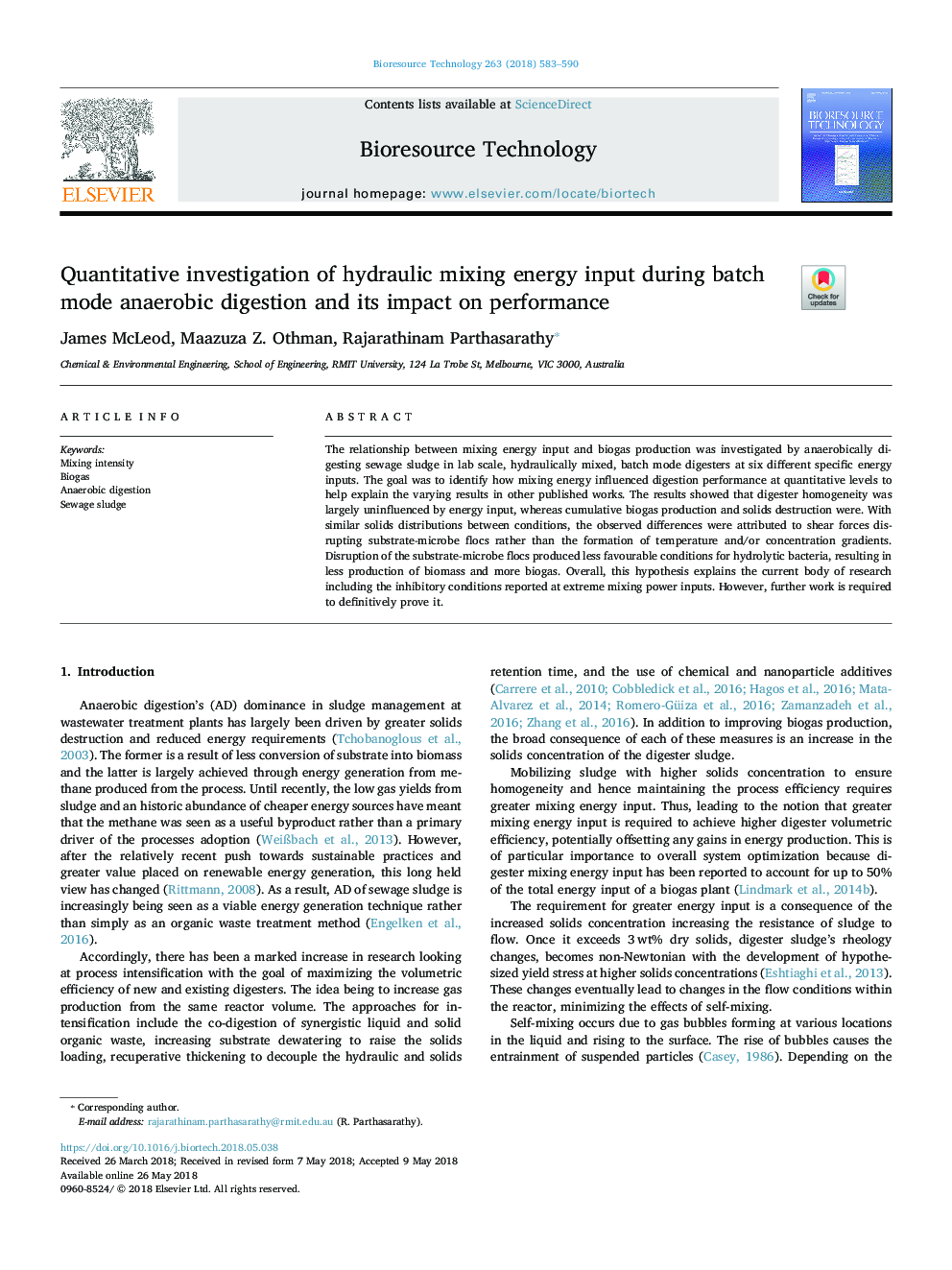| Article ID | Journal | Published Year | Pages | File Type |
|---|---|---|---|---|
| 7066600 | Bioresource Technology | 2018 | 8 Pages |
Abstract
The relationship between mixing energy input and biogas production was investigated by anaerobically digesting sewage sludge in lab scale, hydraulically mixed, batch mode digesters at six different specific energy inputs. The goal was to identify how mixing energy influenced digestion performance at quantitative levels to help explain the varying results in other published works. The results showed that digester homogeneity was largely uninfluenced by energy input, whereas cumulative biogas production and solids destruction were. With similar solids distributions between conditions, the observed differences were attributed to shear forces disrupting substrate-microbe flocs rather than the formation of temperature and/or concentration gradients. Disruption of the substrate-microbe flocs produced less favourable conditions for hydrolytic bacteria, resulting in less production of biomass and more biogas. Overall, this hypothesis explains the current body of research including the inhibitory conditions reported at extreme mixing power inputs. However, further work is required to definitively prove it.
Related Topics
Physical Sciences and Engineering
Chemical Engineering
Process Chemistry and Technology
Authors
James McLeod, Maazuza Z. Othman, Rajarathinam Parthasarathy,
